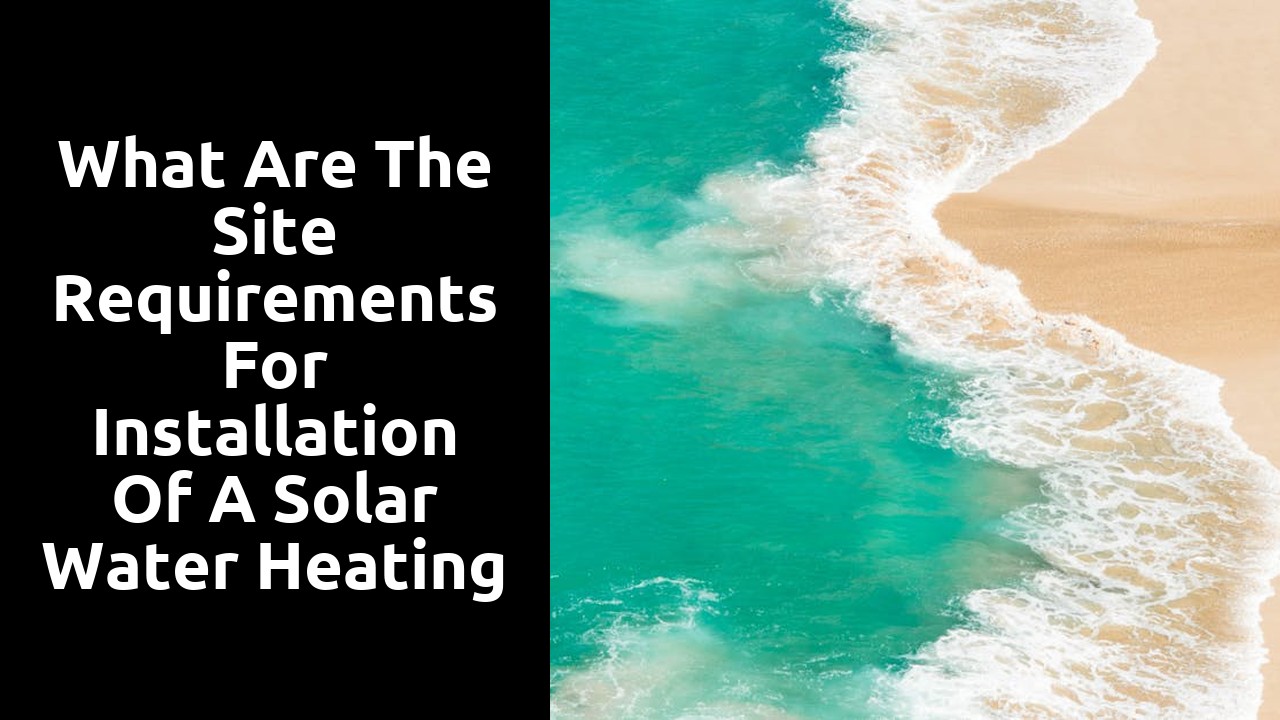
Table Of Contents
Shading Analysis for Solar Water Heater Positioning
To optimally position a solar water heating system, conducting a shading analysis is crucial. This assessment helps in determining the amount of sunlight the panels will receive throughout the day. When considering the positioning of the solar water heater, it is essential to ensure that minimal shading occurs to maximize energy absorption. Shading can significantly impact the efficiency of the system by obstructing sunlight from reaching the panels consistently. Incorporating a shading analysis into the planning phase of the installation process is fundamental for achieving optimal performance of the system.
Shading analysis plays a vital role in enhancing the overall performance and efficiency of a solar water heating system. To guarantee the successful operation of the system, it is imperative to identify any potential sources of shading such as nearby buildings, trees, or structures that could obstruct sunlight. By strategically positioning the solar panels in an area with minimal shading, homeowners can harness the full potential of solar energy. Therefore, conducting a detailed shading analysis is a fundamental step in Solar Hot Water System Design and Installation.
Potential Obstructions from Trees or Buildings
Potential obstructions from trees or buildings can significantly impact the efficiency of a solar hot water system. When considering the installation location for the system, it is crucial to assess the surrounding environment for any obstacles that may cast shadows on the solar panels. Trees or tall buildings to the east or west of the system can block sunlight during critical times of the day, reducing the system's overall performance. Solar hot water system design and installation require careful planning to ensure optimal exposure to sunlight throughout the day.
Inadequate sunlight exposure due to obstructions can result in lower energy production and may lead to increased reliance on alternative heating sources. To maximise the efficiency of the system, it is essential to position the solar panels in an area that receives direct sunlight for the majority of the day. By addressing potential obstructions from trees or buildings early in the planning stages of solar hot water system design and installation, homeowners can enhance the system's performance and reduce energy costs.
Maintenance Access Points for Solar Water Heating System
Maintenance access points are a crucial aspect of a functional solar water heating system. Ensuring easy access to components such as the collector panels, circulation pumps, and piping facilitates regular inspections and servicing. Properly positioned access points not only aid in maintenance tasks but also contribute to the overall efficiency and longevity of the system. For optimal performance and longevity, it is essential to adhere to recommended maintenance schedules as outlined in the Solar Hot Water System Design and Installation guidelines.
Additionally, integrating maintenance access points into the design phase of the solar water heating system allows for easier troubleshooting and potential upgrades in the future. Strategically positioning access points in areas that are easily reachable by service technicians or homeowners simplifies the process of identifying and rectifying any issues that may arise. By prioritising maintenance access points during the installation phase, the overall functionality and reliability of the solar water heating system can be significantly enhanced in accordance with Solar Hot Water System Design and Installation standards.
Clear Pathways to Panels and Piping
To optimize the effectiveness of a solar hot water system design and installation, ensuring clear pathways to panels and piping is crucial. Adequate space must be planned around the solar panels to facilitate easy maintenance and access. This includes allowing enough room for individuals to move around the panels comfortably and attend to any repairs or cleaning that may be required. Additionally, having unobstructed pathways enables technicians to inspect the piping system easily, ensuring that it remains in optimal condition for the efficient operation of the solar hot water system.
Furthermore, it is essential to consider the layout of the piping system when designing pathways around the solar panels. Clear pathways should be designed to provide access to the pipes for inspection and potential repairs. By incorporating this consideration into the solar hot water system design and installation process, homeowners can ensure that their system is well-maintained and functions effectively for years to come.
Considerations for Backup Heating Systems
Backup heating systems are a critical component of a comprehensive solar hot water system design and installation. In regions where sunlight may be inconsistent or during periods of high hot water demand, having a backup heating system ensures a continuous supply of hot water. Different types of backup heating systems can be integrated with solar water heating setups, including gas, electric, or heat pump systems. The choice of backup heating system depends on factors such as local climate, energy costs, and household preferences.
When considering backup heating systems for a solar hot water system design and installation, it is important to evaluate the efficiency and cost-effectiveness of each option. Gas systems are known for their rapid water heating capabilities and lower operational costs, while electric systems offer simplicity and ease of maintenance. Heat pump systems are increasingly popular due to their energy efficiency, utilizing ambient air or ground temperature to heat water effectively. Selecting the most suitable backup heating system involves careful assessment of performance, environmental impact, and long-term operational expenses within the context of the solar water heating system.
Integration with Existing Hot Water System
When integrating a solar water heating system with an existing hot water system, it is crucial to consider the compatibility between the two systems. The solar hot water system design and installation should harmoniously work with the pre-existing hot water setup to ensure seamless operation and optimal energy efficiency. Assessing the current hot water system’s capacity and layout will assist in determining the most effective method of incorporating the solar water heating system.
Additionally, the integration process should involve a professional evaluation to guarantee that the installation complies with relevant Australian standards and regulations. Ensuring that the solar water heating system is correctly connected to the existing hot water system is essential for consistent hot water supply. Proper integration will not only enhance energy savings but also contribute to the longevity and effectiveness of the overall Solar Hot Water System Design and Installation.
FAQS
What factors should be considered for the positioning of a solar water heating system on a site?
The positioning of a solar water heating system should take into account shading analysis, potential obstructions from trees or buildings, and the availability of clear pathways to panels and piping.
How important is it to have maintenance access points for a solar water heating system?
Maintenance access points are crucial for easy servicing and upkeep of a solar water heating system. They allow technicians to quickly access and inspect the system for any issues.
Can trees or buildings obstruct the sunlight required for a solar water heating system to function efficiently?
Yes, trees or buildings can obstruct sunlight and create shading issues that may affect the performance of a solar water heating system. It is important to assess and address potential obstructions during the installation process.
What should be considered when integrating a solar water heating system with an existing hot water system?
When integrating a solar water heating system with an existing hot water system, considerations should be given to backup heating systems to ensure continuous hot water supply, especially during periods of low solar energy availability.
How can pathways to solar panels and piping be kept clear for maintenance and servicing?
Clear pathways to solar panels and piping can be maintained by ensuring that no obstacles block access to these components. Regularly checking and clearing any obstructions will facilitate easy maintenance and servicing of the solar water heating system.
